This week, read about how exercise intensity matters for glucose tolerance, pro tips for tendon injuries, the Mediterranean diet cuts heart disease risk, tips for daylight saving time, lack of nutrition in medical education, evidence for foam rolling, how athletes stay fast after 50, adding salt to sports drink improves 1/2 ironman performance, probiotics hype, health benefits of peanuts, 3 surprising sources of calcium, and more.
Higher Intensity Exercise Improves Glucose Tolerance
We know exercise is good for us, but is it possible for some people to maximize the health benefits of their exercise time? Researchers from Queen’s University looked at that question by studying the influence of different combinations of exercise intensity and duration in 300 sedentary adults with abdominal obesity (waist circumference >35 inches for women; >40 inches for men). Study participants exercised 5 times a week for 24 weeks, but they followed these three different protocols:
- low duration (about 30 mins), low intensity;
- high duration (about 60 mins), low intensity; and
- moderate duration (about 40 mins), moderate intensity* (brisk walking for sedentary people)
And a control group had no exercise prescription.
After 6 months, all three exercise groups had reduced their waist size by 2 inches, and lost 5-6% of their body weight. Participants in the moderate intensity group had the additional benefit of improved glucose tolerance. Other research has shown that exercising at higher intensities, or strength training, helps the body process sugar. (Annals of Internal Medicine, March 2015).
Another Study Confirms The Beauty Of The
Mediterranean Diet. So Why Are We Not All On It Already?
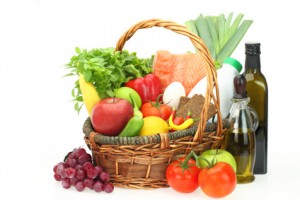 Eating a Mediterranean-style diet can cut heart disease risk by nearly half, according to a study presented this week at the American College of Cardiology conference in San Diego. So why does everyone seem to be following fad diets like avoiding wheat, instead of adopting evidence-based diets full of delicious foods? Part of the problem may be that physicians don’t know how to recommend this diet, as another study presented at the conference suggested: an online nutrition survey noted significant gaps in nutrition knowledge in cardiologists and internal medicine specialists. (Alice Walton, Forbes).
Eating a Mediterranean-style diet can cut heart disease risk by nearly half, according to a study presented this week at the American College of Cardiology conference in San Diego. So why does everyone seem to be following fad diets like avoiding wheat, instead of adopting evidence-based diets full of delicious foods? Part of the problem may be that physicians don’t know how to recommend this diet, as another study presented at the conference suggested: an online nutrition survey noted significant gaps in nutrition knowledge in cardiologists and internal medicine specialists. (Alice Walton, Forbes).
Lack of nutrition in medical education
Although it doesn’t receive much press, the neglect of nutrition in medical education is an important issue. As I’ve highlighted previously, you may find it surprising (and discouraging!) to learn that most medical students receive very little, if any, nutrition education. In this article, a 2nd year medical student at Harvard Medical School reports on his mere 9 hours of nutrition education, which is similar (or even better) to other schools. Given that heart disease, diabetes, other chronic diseases, and obesity are leading health problems with recognized dietary causes, it seems that there is much room for improvement in the medical school curriculum. Marion Nestle’s accompanying editorial is also worth reading. (JAMA Intern Med. April 14, 2014.)
More Links of Interest This Week
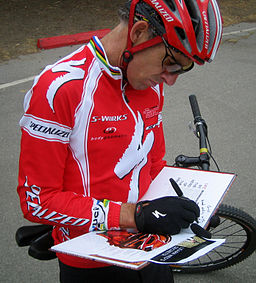 You can still be fast after 50. Some tips from Joe Friel’s new book, highlighting that high-intensity workouts and strength training are critical. (Outside Magazine).
You can still be fast after 50. Some tips from Joe Friel’s new book, highlighting that high-intensity workouts and strength training are critical. (Outside Magazine).
Here’s an excerpt from the book, featuring 59-year old cyclist Ned Overend on high-intensity training for masters. Overend favours a high intensity/low volume approach. (Velonews).
You’ll find more training tips and resources for masters’ athletes here.
4 Ways to Make the Switch to Daylight Saving Time Less Miserable. Advice from sleep experts: dial back your bedtime; avoid alcohol & caffeine near bedtime; go to work late if you can; tweak your workout routine (Time).
Daylight Saving Time: Why some have such a hard time making the switch. Teens and “night owls” will struggle; a look at the issues, and some good tips to adapt. (Angela Mulholland, CTV News).
Charcoal Juice Is Now a Thing. Another fad – claims to “draw toxins out of your body for improved organ function.” Something to avoid. (Time)
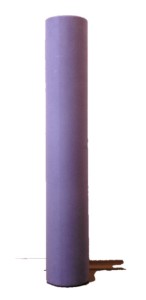 Adding salt to sports drinks improves performance in half ironman. Most sports drinks might not contain enough salt to replace electrolytes lost during intense activity lasting more than 2 hours. Spanish researchers found that triathletes who increased sodium intake (sports drinks plus salt capsules) completed a half iron distance triathlon 26 minutes faster than those consuming only sports drinks. Researchers think the performance benefit might relate to more fluid consumption overall, as higher sodium in the blood stimulates thirst, and better balance of electrolytes during competition(Medical Express, reporting on Scandinavian Journal of Medicine & Science in Sports, Feb 2015).
Adding salt to sports drinks improves performance in half ironman. Most sports drinks might not contain enough salt to replace electrolytes lost during intense activity lasting more than 2 hours. Spanish researchers found that triathletes who increased sodium intake (sports drinks plus salt capsules) completed a half iron distance triathlon 26 minutes faster than those consuming only sports drinks. Researchers think the performance benefit might relate to more fluid consumption overall, as higher sodium in the blood stimulates thirst, and better balance of electrolytes during competition(Medical Express, reporting on Scandinavian Journal of Medicine & Science in Sports, Feb 2015).
Foam rolling is popular, does it work? Many athletes use a foam roller to decrease muscle soreness. A new study lends support for this practice, and suggests that the roller may also help muscles recover enough to help physical performance decrements associated with delayed onset muscle soreness. (Journal of Athletic Training, 2015;50(1):5–13).
Should You Be Taking Probiotics? Huge individual variation, and lack of evidence don’t support most overhyped claims. (David Despain, Outside Magazine)
Motivational self-talk improves 10-km Cycling Time-Trial. Practice positive thoughts to overcome the unpleasant feelings of going hard. Not only will you enjoy racing more, you’ll be faster! (Int J Sports Physiol Perform. 2015 Mar;10(2).
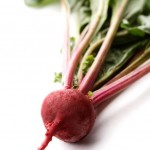 Why nitrate supplementation may increase athletic performance. A growing body of research suggest that dietary nitrates have health benefits, and can improve athletic performance by somehow improving helping the mitochondria in muscle become more efficient. A new study in the FASEB Journal investigates a potential mechanism behind the benefits. Researchers found that dietary nitrates regulate blood viscocity and promote blood flow, helping working muscles get the oxygen they need. (March 2015 The FASEB Journal vol. 29 no. 3). The study was conducted in animals, but you’ll find more information on human studies and health and foods containing nitrates here.
Why nitrate supplementation may increase athletic performance. A growing body of research suggest that dietary nitrates have health benefits, and can improve athletic performance by somehow improving helping the mitochondria in muscle become more efficient. A new study in the FASEB Journal investigates a potential mechanism behind the benefits. Researchers found that dietary nitrates regulate blood viscocity and promote blood flow, helping working muscles get the oxygen they need. (March 2015 The FASEB Journal vol. 29 no. 3). The study was conducted in animals, but you’ll find more information on human studies and health and foods containing nitrates here.
Moderate coffee consumption could lower risk of clogged arteries. South Koreans who drank 3 to 5 cups of coffee a day were less likely to have early signs of heart disease on their medical scans. (Heart, March 2015).
Improving your fitness could improve your spouse’s fitness. New research suggests that if one spouses starts to exercise more, the other spouse is likely to follow suit. (American Heart Association’s EPI/Lifestyle 2015 conference).
One Twin Exercises, the Other Doesn’t. Fascinating study in Finnish twins! (New York Times, reporting on Med Sci Sports Exerc. 2015 Mar;47(3):509-18.)
3 Surprising Sources of Calcium. Although dairy is a good source, many other foods 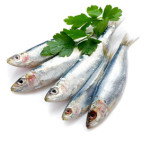 contain this important mineral. This piece highlights blackstrap molasses (also a good source of iron!), sardines, and turnip greens. (Fooducate)
contain this important mineral. This piece highlights blackstrap molasses (also a good source of iron!), sardines, and turnip greens. (Fooducate)
Pro tips for treating tendon injuries. Tendenopathy is a general term to describe inflammation and microtears in tendons: they are common injuries that can affect many tendons, for example like achilles tendons in runners, elbows in tennis, squash players, and golfers, etc. Treatment options are numerous and vary in their efficacy. Alex Hutchinson looks at the pros and cons of various treatments in his Globe and Mail column, and examines the issue in his Runner’s World column: The Great Tendinopathy Debate. It seems the most effective option might be “eccentric strengthening,” which is also the least invasive, and the cheapest. Eccentric strengthening involves exercises that contract your muscle as it lengthens. (Alex Hutchinson in Globe and Mail and Runners World).
Should I take an iron supplement? Good information for athletes in this article (Outside). For a more comprehensive look, and good food sources of iron, my article and resources on the iron need of athletes.
The New Science Behind Low-Carb Training. Athletes need carbs to fuel their workouts, but there may be some benefits to limiting carbs strategically. There’s not a lot of good research on performance outcomes, but here’s an explanation of a “sleeping low” strategy. (David Despain, Outside Magazine).
Even Composting Comes With Sticker Shock. Those annoying little stickers on your fruit are also annoying for compost companies . . . (New York Times)
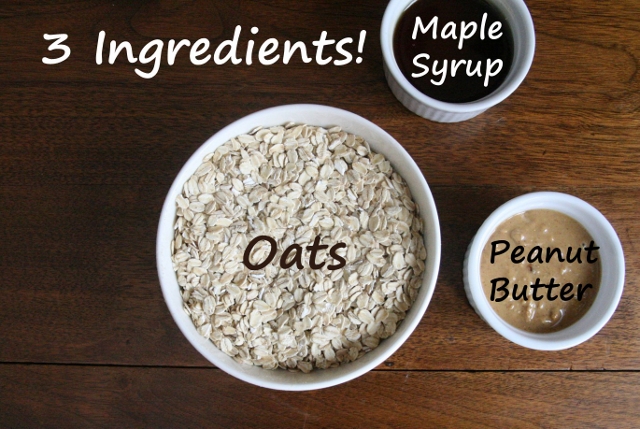 Peanut Eaters May Live Longer.
Peanut Eaters May Live Longer.
A good reason to try my 3-ingredient peanut-maple granola!